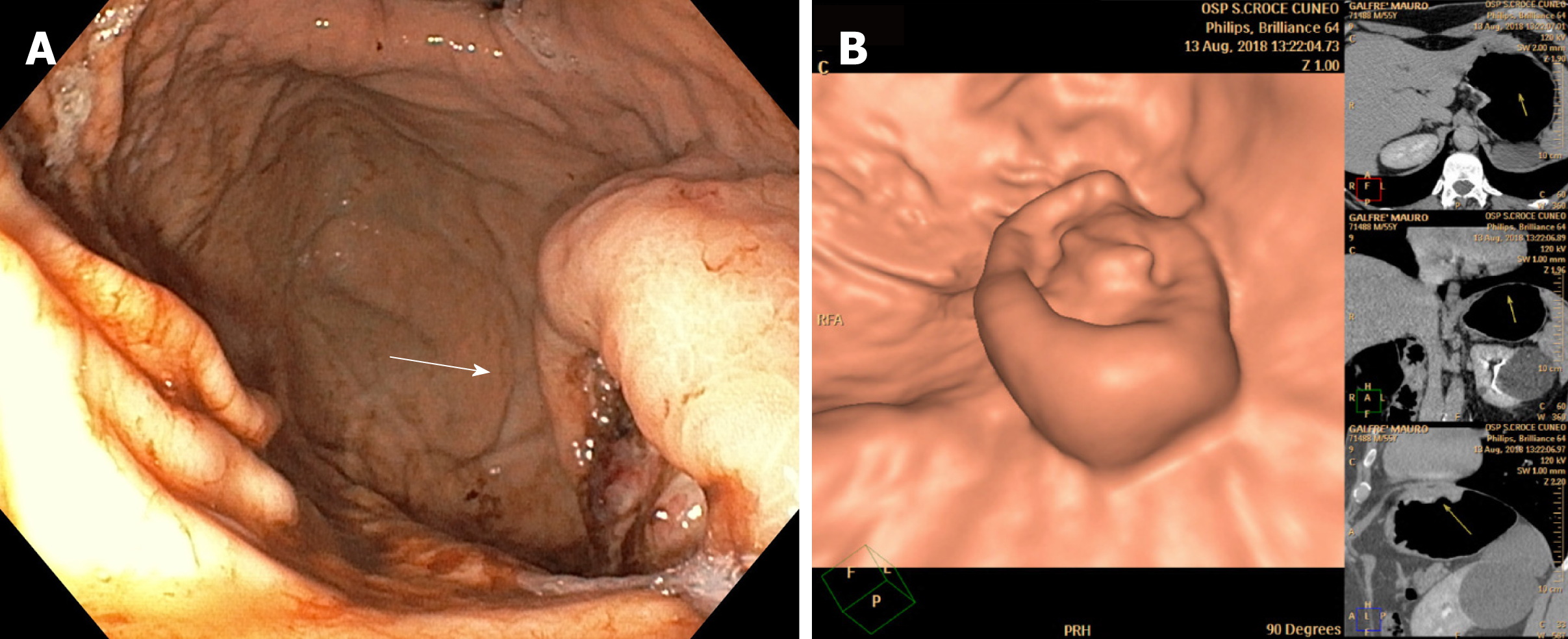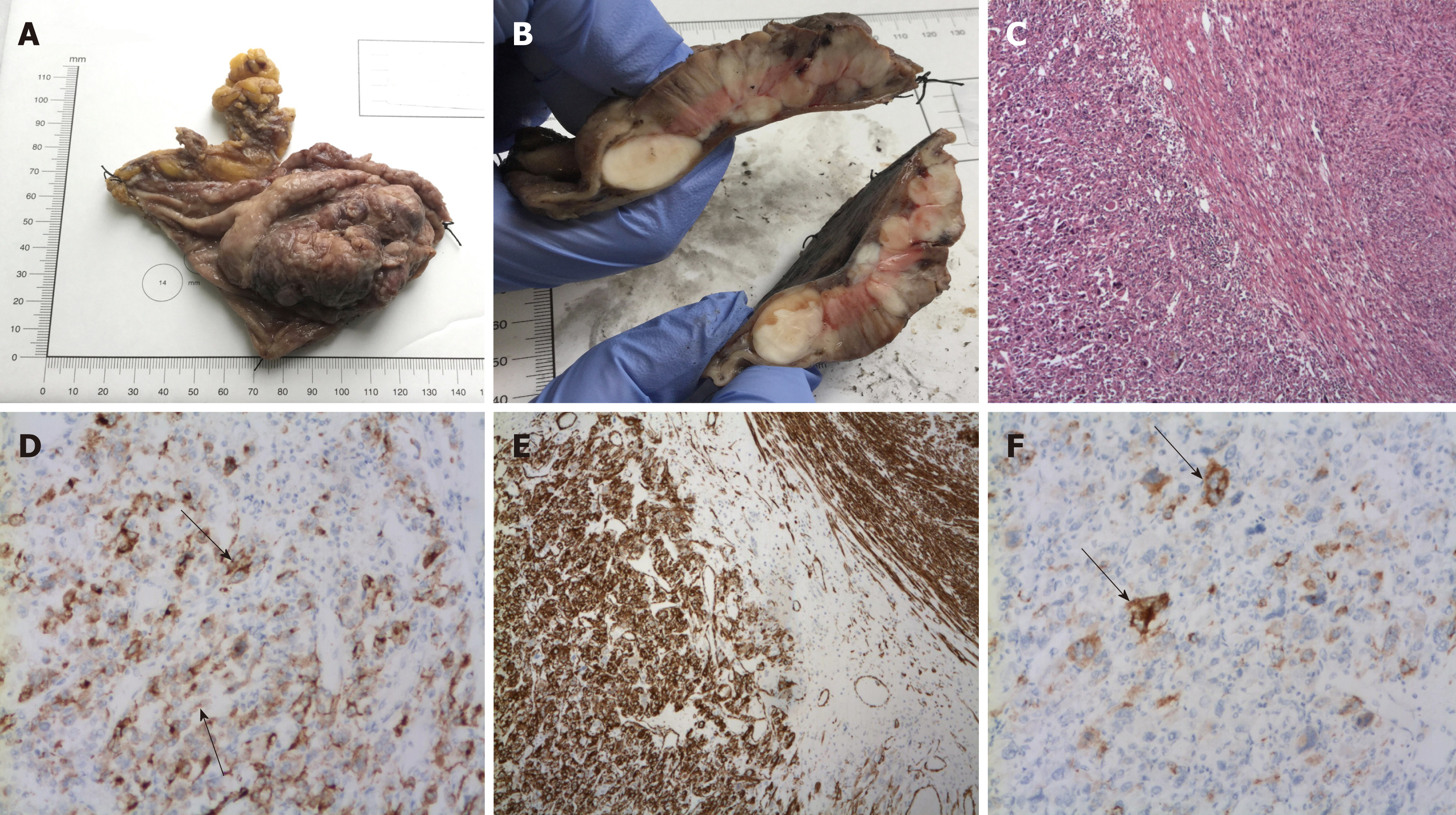Copyright
©The Author(s) 2019.
World J Clin Cases. Dec 6, 2019; 7(23): 4011-4019
Published online Dec 6, 2019. doi: 10.12998/wjcc.v7.i23.4011
Published online Dec 6, 2019. doi: 10.12998/wjcc.v7.i23.4011
Figure 1 Upper endoscopy and computed tomography gastrography findings at surgery.
A: Upper endoscopy showed an ulcerative lesion of the gastric fundus with spontaneous bleeding; B: Computed tomography gastrography showed a relatively well-defined mass with ulceration of the gastric fundus, 3 cm below the esophago-gastric junction, with heterogeneous enhancement, measuring approximately 60 mm.
Figure 2 Overhead view of the operative technique.
A: operative room configuration; B: da Vinci® Si™ port layout. R: Robotic trocar; SUL: Spine-umbilical line; MCL: Midclavicular line.
Figure 3 Gross examination and histopathology.
A: Polypoid lesion with central ulcer (arrow), located in the gastric wall protruding into mucosal and serous surfaces; B: Cut surface showing grayish-white; C: Microscopic sections (hematoxylin-eosin staining) of the gastric neoplasm showing both epithelioid and spindle cell components; D: 3.3’-diaminobenzidine (DAB) immunostaining for HMB-45 demonstrates positivity for epithelioid and spindle cells (arrows); E: The spindle and epithelioid cells are consistently immunopositive for smooth muscle actin following DAB immunostaining; F: Focal expression of MART-1 in the tumor cells (arrows) following DAB immunostaining. Magnification: C: 4 ×; D: 10 ×; E: 4 ×; F: 10 ×.
- Citation: Marano A, Maione F, Woo Y, Pellegrino L, Geretto P, Sasia D, Fortunato M, Orcioni GF, Priotto R, Fasoli R, Borghi F. Robotic wedge resection of a rare gastric perivascular epithelioid cell tumor: A case report. World J Clin Cases 2019; 7(23): 4011-4019
- URL: https://www.wjgnet.com/2307-8960/full/v7/i23/4011.htm
- DOI: https://dx.doi.org/10.12998/wjcc.v7.i23.4011











